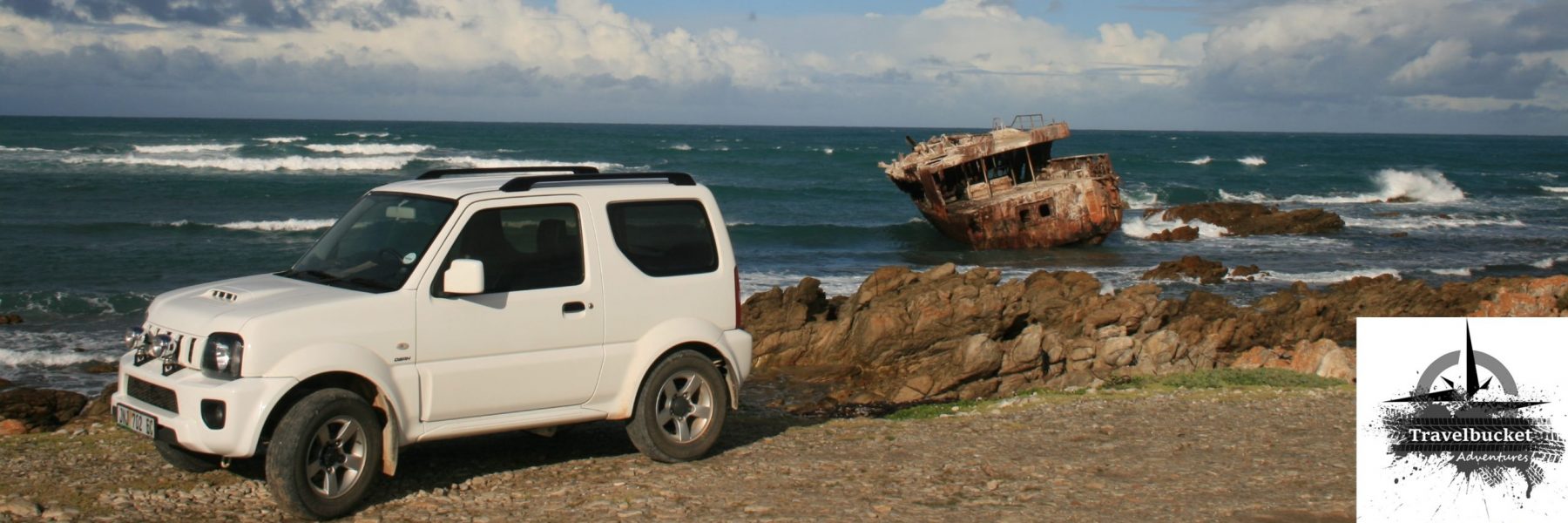I stepped back in time when we visited this UNESCO world heritage site that looks out over the Straits of Melacca. This town, which is situated about two and a half hours’ drive south of the capital Kuala Lumpur, is filled with history and many other influences. Once we arrived in Melacca a lot of things looked familiar yet slightly different which immediately reminded me of my home country, South Africa. Then it dawned upon me that this is where a lot of the influences in South Africa come from as a lot of South Africans are of Malay decent.
We had a weekend to spare after hubby concluded his business trip to Kuala Lumpur so we hopped on one of the many long distance buses which runs between KL and Melacca.
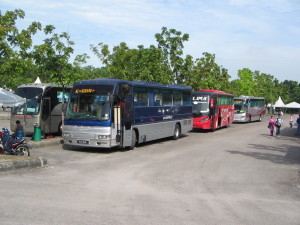
At the bus depot in Kuala Lumpur
Driving out of KL I noticed many kilometres of rubber and palm olive plantations. At first it is impressive, because back in South African we are not familiar with rubber and palm olive plantations. But then as you travel further away from KL the sad sight begins to unfold as you notice the massive deforestation that is happening to make way for these plantations.
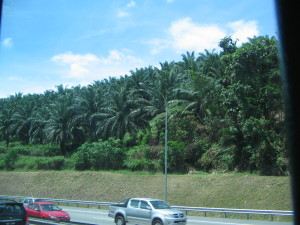
Rubber and palm olive plantations as far as the eye can see
Then we arrived at the bus depot on the outskirts of Melacca. There was no language barrier, as most Malaysians can speak English, when we boarded a taxi to take as to the Aldy Hotel in the historic part of Melacca.
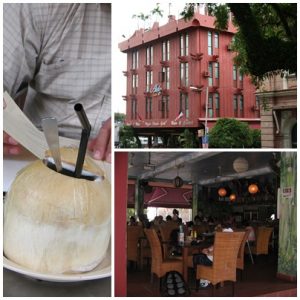
We stayed at the Aldy Hotel in the historic part of town
The famous Jonker Street, well known for its small antique shops and traditional foods, kept us busy for a whole morning. Here we experienced the friendliness of the Malay people while we browsed in tucked away shops, tasted some traditional cuisne and wandered the streets – everything felt so familiar!. Even “Jonker Street” is spelt exactly the way we spell it in SA!
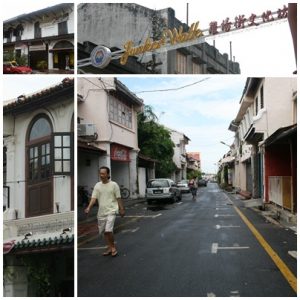
Walking in Jonker Street
Walking back over the bridge you enter the “old city” which is riddled with history as far back as 1511 when the Portuguese constructed Formosa Fort – one of the oldest surviving European buildings in South East Asia. As I walked on the original cobbled floors of the fort I was reminded that South Africa is still a “young” country as Jan van Riebeeck, from the VO,C only arrived in Cape Town during 1652. The fort changed hands in 1641 when the Dutch and VOC took command of Melacca.
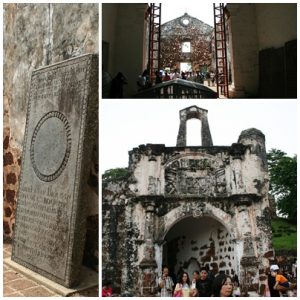
At Fort Formosa
From the fort it was downhill – luckily as we were sweating profusely at this stage due to the high humidity – towards the historic town centre which features the Christ Church and other historic buildings.
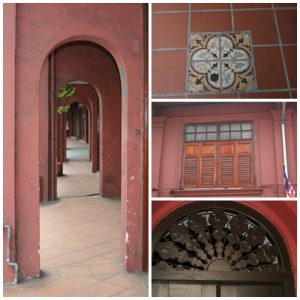
Sights from the town centre
The streets were filled to the brim. In front of the historic church a newly wed couple was taking their wedding pictures amongst the colourful sidewalk stalls, pedestrians and flower sellers.
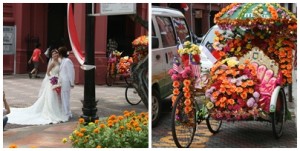
Streets filled with colour
It was time to rest our feet so it was a good call to take one of the red hop-on-hop-off tourist buses that shows you all the noteworthy places in Melacca. The bus ride will keep you busy for about an hour, but at least you can rest your feet and have a bit of a breather while enjoying the sights and sounds of the city.
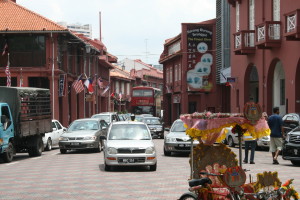
The red tourist bus
In the late afternoon, in search for something to eat and a cool breeze, we took a walk along the main channel of Melacca and stumbled upon several eateries such as the Dutch Harbour Café with it’s (of course) Dutch owners serving excellent food.
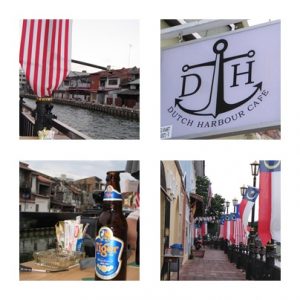
The sight along the channel
The weekend was drawing to a close and it was time to return to KL to catch a flight back to SA. We tasted food of good quality at very affordable prices, experienced the friendliness of the Malay people, could understand a lot of the Malay words as it was so close to Afrikaans and tasted some refreshing tea tarik that you buy in plastic bags from the street vendors! It is traditional tea made from black tea, condensed milk and/or evaporated milk (I think I also tasted a little bit of ginger?) and is considered the national drink of Malaysia.
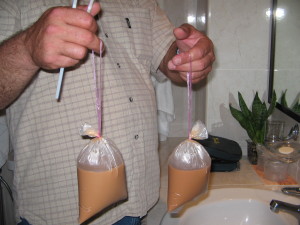
Tea tarik
Should you visit Malaysia? A definite yes from me! One of my personal favourites.
“Don’t cry because it’s over. Smile because it happened.”
Dr. Seuss
